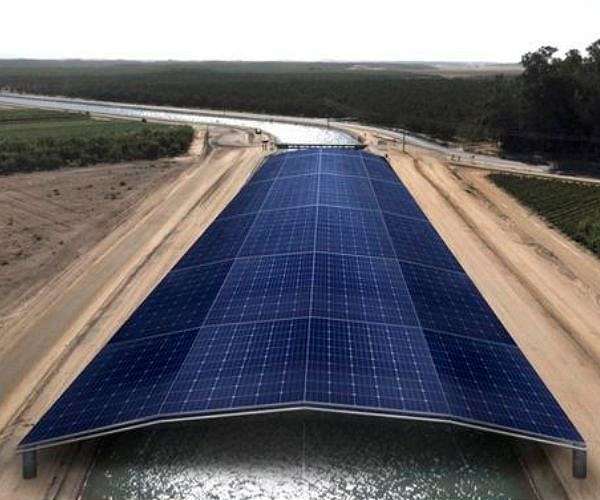Seven universities collaborate to advance solar initiatives over California’s canal system
by Clarence Oxford
Los Angeles CA (SPX) Mar 26, 2025
A team of academics from seven distinguished research institutions, six of which are located in California, has inaugurated a bold initiative focused on enhancing the deployment of solar panel arrays situated above California’s extensive canal system.
The California Solar Canal Initiative (CSCI), spearheaded by scholars at USC Dornsife Public Exchange in collaboration with Solar AquaGrid, aims to furnish essential data and strategic guidance to assist governmental bodies, utilities, and communities in effectively establishing solar canal systems. Their effort builds upon a 2021 research conducted at the University of California, Merced, published in Nature Sustainability, which estimated that outfitting the state’s 4,000-mile canal network with solar panels could yield renewable energy, conserve land, diminish air pollution, and preserve considerable amounts of water.
This initiative has garnered support from significant state agencies responsible for water and energy management, such as the California Department of Water Resources (DWR), the California Natural Resources Agency (CNRA), and the California Energy Commission (CEC). Researchers will closely collaborate with these entities to pinpoint optimal sites, align with existing land and water policies, and encourage cooperation with local communities interested in hosting such projects.
“California is at the forefront of seeking innovative approaches to address climate change and enhance our water and energy resilience,” remarked CNRA Secretary Wade Crowfoot. “We are thrilled to witness leading research institutions unite to promote the integration of solar panels over water canals – a significant idea with immense potential. Collaborative efforts driven by science, such as this, are vital to guiding our future.”
The research group will investigate how solar canals can:
– Adapt to fluctuating energy requirements;
– Offer additional advantages that compete with other distributed solar technologies;
– Aid in existing canal maintenance and operations;
– Adhere to current regulatory standards for land and water;
– Provide benefits to communities where the infrastructure is established.
Participating institutions comprise USC, UC Merced, UC Berkeley, UC Irvine, UC College of the Law San Francisco, San Jose State University, and the University of Kansas. This consortium incorporates a multidisciplinary team of scholars whose efforts are supported by an advisory council made up of leaders from the public, private, and academic domains. Chaired by Solar AquaGrid, this council includes representatives from DWR, CNRA, CEC, California Forward, New Energy Nexus, Environmental Policy Center, and Stanford Water in the West.
Not every canal is appropriate for solar development, but the UC Merced study approximated that fully covering California’s exposed canals could:
– Generate sufficient electricity to supply around 2 million homes annually;
– Preserve enough water to cater to up to 2 million residents each year;
– Eliminate the necessity to develop up to 50,000 acres of land by utilizing existing infrastructure.
Additional benefits highlighted in the research include potential decreases in canal maintenance expenses owing to shading, enhanced solar panel efficiency bolstered by water’s cooling properties, and the creation of local employment opportunities in system installation and maintenance.
Despite recent years of excessive rainfall and flooding emergencies, California’s climate scientists caution that the region will continue to face extreme weather fluctuations between floods and extended drought periods. With the escalating effects of climate change, sustainable water management and increased clean energy generation remain vital priorities for California’s future.
The CSCI aligns with the state’s wider environmental goals, including its aim for 100 percent clean energy by 2045 and its 30×30 land conservation commitment. This initiative follows the rollout of Project Nexus in 2023, California’s inaugural pilot for solar canals, currently being constructed in the Central Valley. That project exemplifies a collaboration between public, private, and academic entities, including the Turlock Irrigation District, Solar AquaGrid, UC Merced, and the California Department of Water Resources.
Further information regarding CSCI, encompassing a media kit, faculty information, and research focus areas, can be accessed at: https://publicexchange.usc.edu/csci-media-kit/.
Related Links
USC Price School of Public Policy
All About Solar Energy at SolarDaily.com

